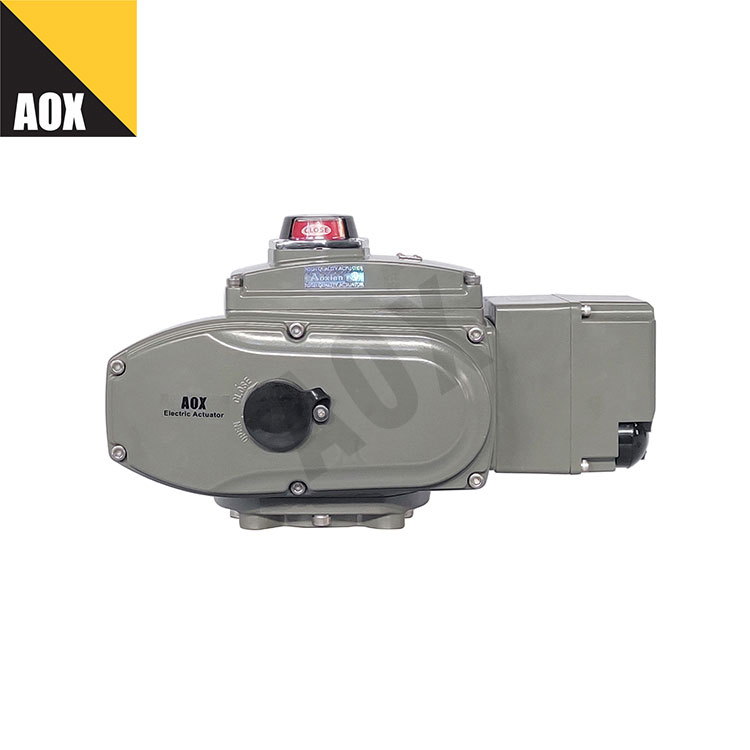Applications of Mini Electric Part Turn Motor Actuator
2024-06-21
A mini electric part-turn motor actuator is a compact and versatile device used to automate the operation of valves, dampers, and other mechanical devices that require rotational movement. These actuators are electrically powered and offer precise control over the angle of rotation, making them suitable for various industrial and commercial applications. Here’s an overview of their key features, applications, and considerations:
Key Features:
1. Electric Operation:
- Operates using electric motors, eliminating the need for pneumatic or hydraulic systems.
- Typically powered by AC (alternating current) or DC (direct current) electricity.
2. Part-Turn Movement:
- Designed for rotational movement within a specific range (e.g., 90 degrees, 180 degrees).
- Suitable for applications where full 360-degree rotation is not required.
3. Torque and Force:
- Capable of generating sufficient torque to operate valves and dampers of various sizes and types.
- Torque output varies depending on the actuator size and design.
4. Control Options:
- Can be controlled manually, via switches, or remotely through digital control systems (e.g., PLCs, SCADA systems).
- Some actuators offer modulating control for precise positioning and flow control.
5. Compact Design:
- Small footprint and lightweight compared to larger actuators, suitable for applications with limited space.
6. Environmental Protection:
- Often designed with robust housings and seals to withstand harsh environmental conditions (e.g., dust, moisture, chemicals).
7. Safety Features:
- Integrated limit switches or position feedback sensors ensure accurate positioning and prevent over-travel.
- Optional features may include fail-safe modes (e.g., spring return) for critical applications.
Applications:
1. Valve Automation:
- Controls the opening and closing of ball valves, butterfly valves, and other types of quarter-turn valves.
- Used in industries such as oil and gas, water treatment, chemical processing, and HVAC systems.
2. Damper Control:
- Regulates airflow in HVAC (Heating, Ventilation, and Air Conditioning) systems, industrial ventilation, and process control.
3. Process Automation:
- Integrates into automated production lines for controlling material handling, mixing, and packaging processes.
4. Fire and Safety Systems:
- Actuates fire dampers and safety shut-off valves in emergency and critical shutdown systems.
5. Environmental Control:
- Manages flow control in wastewater treatment plants, environmental monitoring systems, and renewable energy facilities.
Considerations for Selection:
1. Torque Requirements:
- Determine the torque needed to operate the specific valve or damper in your application.
- Consider factors such as operating pressure, fluid viscosity, and valve size.
2. Power Supply:
- Choose between AC or DC power based on availability and compatibility with existing electrical systems.
- Ensure the actuator voltage and phase match the power supply specifications.
3. Control Interface:
- Evaluate control options (manual, local, remote) based on operational requirements and integration with existing automation systems.
4. Environmental Conditions:
- Select actuators with appropriate ingress protection (IP) ratings for outdoor, hazardous, or corrosive environments.
- Consider temperature ranges and ambient conditions to ensure reliable performance.
5. Mounting and Integration:
- Verify compatibility with valve or damper mounting interfaces (e.g., ISO mounting flanges, shaft dimensions).
- Ensure adequate clearance and accessibility for installation and maintenance.
6. Certifications and Standards:
- Check for compliance with industry standards (e.g., ATEX for hazardous areas, CE marking for European markets) and certifications relevant to your application.
Maintenance:
1. Regular Inspection:
- Check for signs of wear, corrosion, or damage to the actuator housing, motor, and gearing.
- Inspect electrical connections and wiring for tightness and integrity.
2. Lubrication:
- Follow manufacturer recommendations for lubricating moving parts to ensure smooth operation and extend service life.
3. Testing and Calibration:
- Periodically test the actuator’s functionality, including open/close cycles and position accuracy.
- Calibrate position feedback devices to maintain accurate control and safety.
Mini electric part-turn motor actuators provide efficient and reliable automation solutions for rotational control applications in diverse industries. Choosing the right actuator based on torque requirements, control options, and environmental conditions ensures optimal performance and longevity in your automation system.



